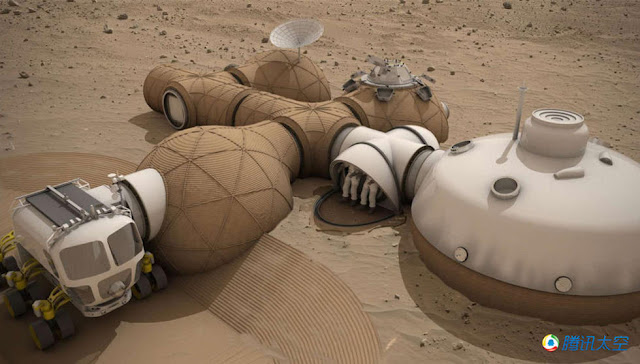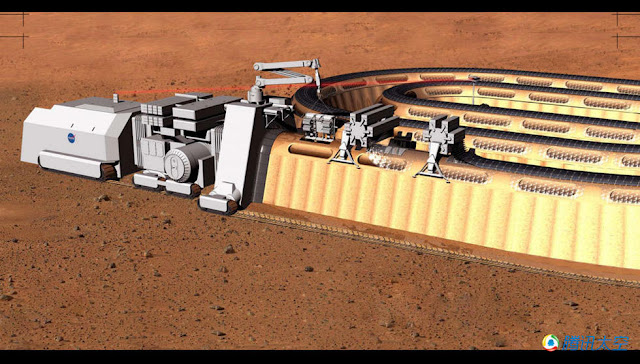The future of humanity on Mars settlements artistic renderings
NASA plans to achieve a manned landing on Mars in the 2030s, the seminar will be held in October this year, landing sites on Mars for confirmation. On the other hand, the relevant technology is manned Mars landing tests are being prepared, including the ongoing development of SLS space launch rockets and Orion spacecraft. In September, NASA held an advantage of 3D printing technology to build the Mars base game ongoing, has entered the stage of a check, a total of 30 copies of the works nominated. Design requirements the robot can use 3D printing technology, use of local materials as building materials to build homes on Mars, the following eight programs might have a chance to win in the final selection stage, it is more like what options?
The Martian Vault - Designer: Tomasz Dzieduszynski
On Earth, similar to the Italian "Pantheon" This building has a dome can stand a thousand years, stand the test of time. Designers Dzieduszynski hope it's "Mars Dome (The Martian Vault)" program can be similarly durable under harsh Martian environment. Scheme, "Mars dome" You can use an inflatable scaffolding to guide the work of 3D printing robot, the robot will use the Martian sand deposited as cement to build homes. Insulation honeycomb-shaped barrier to shield radiation and small meteorites.
Staye A While - Designer: Team Staye
The spiral construction of underground structures envisaged in the ground near the equator of Mars, the surface of Mars near the equator of the following has a lot of water frozen. Excavated during the construction of ice for drinking, the residence was built in the ground can shield cosmic rays, also can be a good insulation.
LavaHive - Designer: Team LavaHive
The team hopes to use inflatable module built residential homes on Mars, so Mars before arrival, they can be deflated to save up to save space spacecraft, Mars arrive until after the inflatable, but they also need to take advantage of the subsequent construction of connecting these Martian sand inflatable module channel.
Marsapia - Designer: Mars Terrain Intelligence Collaborative
Mars, the sand has two valuable resources: iron and silicon, the design team hopes separated from Martian soil in the two elements to build a residence spherical structure. This is the residence of a lattice structure made of iron as hard as granite, glass composition, it can protect the inhabitants of Mars dust storms radiation barrier, a small meteorite and the surface of Mars.
Labyrinth - designers: Rustem Baishev
This is for the future of Mars as many popular travel destination for visitors designed to expand its labyrinthine shape can be unlimited.
Labyrinth construction program to expand the scale of unlimited, it will use nuclear work, the Mars sand mixed with a binder, the machine while moving forward, while the synthetic building materials to toothpaste extrusion.
Mollusca L5 - Designer: LeeLabs
The program may seem unpleasant, but it is a very cool design. It inflatable living module wrapped in a glass dome, a glass structure utilizing local material 3D printing from Mars, which is equivalent to astronauts on Mars may have a yard.
Donut House Mk I - Designer: A.R.C.H.
The house was built like a donut made of basalt fiber by the addition of clay. The design allows the ring to split into separate cabin accommodations, some of which were smashed if meteorites, other parts can still provide shelter for astronauts.
Ice House - Designer: SEArch / Clouds Architecture Office
Unlike other teams using soil as a building material, the team used the ice. Arctic ice cap at the Martian permafrost and there is a lot of water ice, they proposed the use of a special 3D printing process, the use of ice in the Martian arctic astronauts to build homes, water ice can be well absorbed radiation protection astronauts. 2008 Phoenix Mars landing on Mars coincided with the northern summer in the Arctic, during the Phoenix mission to Mars Arctic measured a maximum temperature of -19.6 ° C, while the lowest was -97.7 ° C.










No comments:
Post a Comment